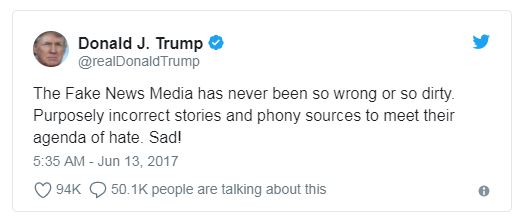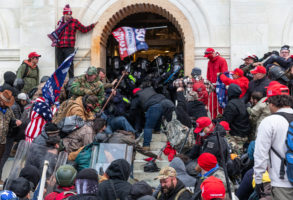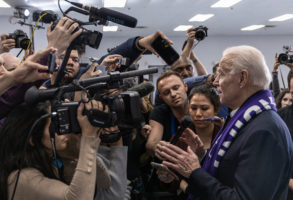
Published February 5, 2018
Below is a précis of EPPC Hertog Fellow Yuval Levin’s white paper “American Journalism as an Institution.” Read the complete paper here.

So wrote President Donald Trump on Twitter on June 13, 2017. It is a sentiment he has expressed many times. That the president of the United States would say this, and on a social media platform that affords him direct access to millions of Americans on his own terms, is a mark of the peculiar situation of journalism in contemporary American life.
Journalism in general, and political journalism in particular, is in a state of flux in our country — perhaps even in a state of crisis. The core of the problem is not the economics of journalism (brutal though it has been in the information age), or any threat to press freedom. So what is the nature of this crisis? And what kind of response might it require?
Journalism faces a crisis of public confidence, a crisis of integrity and trust. While complaints about the media naturally fall into the grooves of popular rejection of elite authority, as the president’s tweet above suggests, they often have at least as much to do with skepticism about the integrity of the mainstream media as with its power.
In the middle decades of the 20th century, public confidence in journalism rose to extraordinary heights, along with a broader public confidence in America’s large institutions. In 1976, Gallup found that 72 percent of Americans had confidence in the news media.
Since that time, and again in line with the broader trend of public views about our nation’s institutions, trust in journalism has plummeted. Last year, Gallup found that roughly 32 percent of the public expressed trust in the press. At the same time, journalism, like some other key institutions, has gone through a deconsolidation, thanks to the rise of the internet and social media.
By multiplying and fragmenting sources of information, the web and social media have turned the work of journalism into artifacts of self-expression for different groups of Americans, as people filter and select among news sources, then distribute the work of those they choose — or those chosen for them by algorithms meant to predict their preferences — among their virtual circles.
And by providing powerful independent platforms for dissemination, social media in particular have turned many journalists from participants in the work of institutions to managers of personal brands who carefully tend to their own public presence and presentation.
Even reporters for major national newspapers and television networks, whose formal work is subject to layers of editing and verification, now have a constant presence on Twitter and other social networks, and offer both reporting and commentary in an ongoing way. This makes it difficult to distinguish the work of individuals from the work of institutions, and increasingly turns journalistic institutions into platforms for the personal brands of individual reporters. When the journalists’ work appears indistinguishable from grabbing a megaphone — they become harder to trust. They aren’t really asking for trust.
These trends feed into a self-intensifying cycle that exacerbates mistrust, undermines standards, makes comparisons of reliability a challenge, and leaves the public understandably skeptical about the integrity of contemporary journalism. It also contributes to genuine institutional failures — failures to enforce journalistic standards, to resist various political hysterias and to appropriately restrain the power of the press — that further contribute to public cynicism about journalism.
What to do? The first step is recognizing this crisis in trust in journalistic integrity. Journalists should turn away from chasing individual celebrity, which is the very opposite of the culture of institutional integrity. Instead, they should channel their work and their ambitions through institutional frameworks (old and new), and their reporting should take greater account of the character and work of institutions. This is a heavy responsibility, but it’s one that those committed to a thriving, free society, and to the place of a robust free press within it, ought to welcome and embrace.
“American Journalism as an Institution” is part of a white paper series on media and democracy commissioned by the John S. and James L. Knight Foundation. Read the complete paper, and learn about what today’s press has in common–and what it doesn’t–with the mid-20th century and revolutionary era press.
Yuval Levin is the Hertog Fellow at the Ethics and Public Policy Center.





